A review of sustainability successes
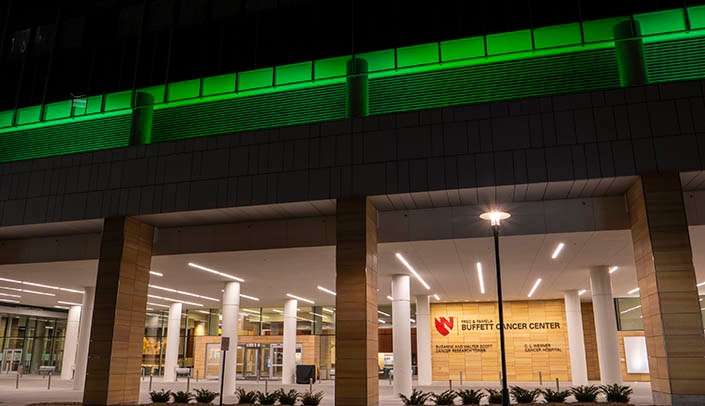
In celebration of Earth Month this year, Lindsay Neemann, manager of facilities and planning, sat down with UNMC Chancellor Jeffrey P. Gold, MD, to discuss sustainability efforts at the med center.
The episode of “Under the Microscope” highlighted some of the many exciting sustainability achievements at the med center, particularly in regard to transportation and TravelSmart. More achievements are highlighted below, along with some 2030 goals. More information on the med center’s sustainability journey is available on the sustainability journey timeline.
Net Zero Water: Limit water use to a budget equal to the amount of rainfall on campus annually.
Since baselining, the med center has reduced water usage by about 20%, the equivalent of 451 Olympic-sized swimming pools saved since 2012. This success largely has come from reducing irrigation, planting more trees and converting grass turf to other landscaping where applicable. Encouraging colleagues to report leaks and drips also has been a key strategy.
Net Zero Waste: Increase percentage of materials diverted from the landfill by weight to 90%.
From 2012 to 2020, the med center increased its waste diversion about 5%. Recycling waste from construction and demolition has been a major achievement in this area. Composting and reducing materials (like paper for printing) are potential priorities, as well.
Emissions: Net-zero building emissions. Reduce emissions by 154K metric tons of carbon dioxide equivalent.
The med center has reduced emissions by 12% from baseline. Ensuring that new buildings are designed to be as energy efficient as possible will be a priority, with the help of the recently updated design guidelines. Installation of LED lights has decreased electricity usage by 52%, saving the med center $231,000 annually. And solar energy is now being generated onsite through the installation of 1,587 solar panels — the largest rooftop solar array in Nebraska.
Campus Engagement: Sustainability engagement score (SES) of 85.
From 2012 to December 2019, the med center’s SES score went from 45 to 57. The LiveGreen Ambassador Program has been essential to increasing this metric, with more than 250 colleagues and students attending annual trainings, helping educate peers and advancing initiatives on campus.
To stay up to date on the med center’s goals, check out the dashboard.
Project Drawdown
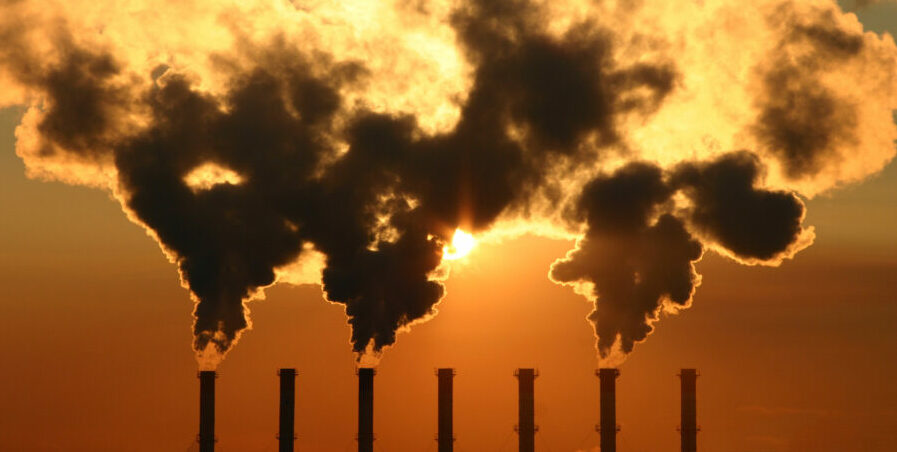
According to CO2-Earth, the current parts per million (ppm) of carbon dioxide (CO2) in the Earth’s atmosphere is 419.90. In 2020, it was 416.33.
As these numbers continue to rise, it seems harder and harder to reach a point where we are actually decreasing the amount of CO2 in the atmosphere. Project Drawdown was founded in 2014 “to help the world reach ‘Drawdown’ — the future point in time when levels of greenhouse gases in the atmosphere stop climbing and start to steadily decline.”
As a nonprofit research center, Project Drawdown works to create climate solutions and strategies for reaching this goal. They have developed a framework with strategies in three categories:
- Reduce sources (the emission-producing sectors);
- Support sinks (the natural or artificial systems that absorb or drawdown emissions); and
- Improve society.
Here are a few exciting and surprising strategies:
- Reduce food waste: “A third of the food raised or prepared does not make it from farm or factory to fork. Producing uneaten food squanders a whole host of resources-and generates greenhouse gases at every stage.” In fact, food waste makes up about 8% of global emissions.
- Eat a plant-rich diet. Currently, much of the Western world’s diet relies on meat. This reliance on meat produces one-fifth of global emissions.
- Educate girls. “Educated girls realize higher wages and greater upward mobility, contributing to economic growth. Education shores up resilience and equips girls and women to face the impacts of climate change. They can be more effective stewards of food, soil, trees and water, even as nature’s cycles change.”
Drawdown is working to push people, cities and countries to adopt these strategies in order to decrease emissions and create a more equal and tolerant society. These are just a few strategies; find all of Project Drawdown’s strategies here.
The med center is doing a Drawdown Ecochallenge for Earth Month. Check it out here. You also can join the ongoing Drawdown Ecochallenge and continue to take action after April ends.
Reducing printing, waste

For Earth Month, we wanted to highlight a sustainability success within the medical center community.
While working from home, the Nebraska Medicine Payer Relations Department was able to decrease paper usage by 83% — from 161,156 sheets of paper printed annually (as of March 2019) to 27,718 (March 2020).
We talked to Payer Relations Manager Betsy Noble about their paper reduction and how they achieved it.
Payer relations is responsible for the medical staffing office and manages 21 health insurance payers. The department receives hundreds of files each year and is required to print these documents to mark them up, go to primary sourcing sites and conduct verifications, resulting in paper files of 30-150 pages. Files are then verified, signed off and stored in file cabinets in warehouses for seven years.
Noble said that the most significant factor in reducing payer relations printing has been the use of Adobe PDF. With this program, the process can be done completely in PDF files, and the files are all stored digitally on computers instead of in file cabinets. Previously, files were passed from person to person, generating many high touch surfaces and contact within the office.
With the files online, there is less physical contact between staff through these papers, producing a safer and healthier environment. The shift has also helped the department improve workflow. Staff can fax directly from the computer through Adobe without printing anything, which creates a quicker process for moving important files to the right places. Unfortunately, due to Medicare and Iowa Medicaid requirements regarding paper copies, the department will not be able to go fully paperless unless the federal government decides to do so.
The COVID-19 pandemic has established the need for innovation and adaptation, and some changes will stick.
“We will never go back to printing,” Noble said. “I encourage everyone to look into the paper they are printing. Is there a way these can be done in PDFs and an online setup? Anyone who has paper processes should be encouraged to move to digital. It will be a tough transition, but it is necessary.”
The transition will help in reducing waste, improving workflow and avoiding disease transmission.
Once paper is printed, it’s important to dispose of it the right way — shred and recycle. As a reminder, the personal document shredding and e-waste recycling event is next Tuesday and Wednesday, April 20-21.
Improving environment step-by-step

With each step, walking can make a difference, not only for you but for the environment.
According to the Department of Health and Human Services (DHHS), walking is a good way to help people who are inactive become physically active. Walking intensity, duration and frequency are self-determined, and people can tailor their walking patterns to fit their time, needs and abilities. Walking to work or to other activities is an easy way to fit this kind of exercise into your daily routine — and it will save you money, decrease your carbon footprint and improve your health.
Walking instead of driving in a personal vehicle means avoiding the use of gasoline, which costs money and is harmful to the environment. The EPA greenhouse gas equivalencies calculator estimates that every 113 gallons of gasoline is equal to 1 metric ton of CO2e (carbon dioxide equivalent), which is equivalent to burning 1,107 pounds of coal.
If you’ve been working at home during the pandemic, you may not have the opportunity to walk to work at the moment. But there are still health benefits to finding time for a 15-30-minute walk, even just around your neighborhood or to do errands. The Mayo Clinic says that physical activity doesn’t need to be complicated. Something as simple as a daily brisk walk can help you:
- Maintain a healthy weight;
- Prevent or manage various conditions, including heart disease, high blood pressure, and type 2 diabetes;
- Strengthen your bones and muscles;
- Improve your mood; and
- Improve your balance and coordination.
The faster, farther and more frequently you walk, the greater the benefits. You can walk more by finding a local shop or restaurant to order from and walk there, use the stairs instead of the elevator or set a goal for 10,000 steps per day. And as folks return to the office, consider walking or using another active transportation method to get to work. The med center has showers available for active commuters to use upon arrival, making it easy to build these multiple benefits right into your day.
Earth Month kickoff

April 22 is Earth Day, but the medical center will celebrate Earth Month throughout April.
Sustainability is important to the med center — both as an internal practice and as a part of the organizational mission “to lead the world in transforming lives to create a healthy future for all individuals and communities.” The med center has 2030 goals for building emissions, water consumption, waste diversion rate, transportation, campus density and sustainability engagement. Over the years, the med center has taken on a variety of efforts to meet these goals and lead the industry in sustainable practices. Take a look at the Our Journey page to learn more about the past, and view the Dashboard to track our progress.
Check out the list below or go to the LiveGreen Earth Month site to find out how you can participate in our Earth Month celebration. Each item is linked with all the details you need to know.
All month
- Drawdown EcoChallenge: Visit the website to pledge to take a simple action, including educating yourself on a new topic. Join our team to earn points, win prizes, and make the planet better (oh, and help us beat the University of Nebraska at Omaha’s team for the third challenge in a row). Invite your friends and family to participate on our team –the more the merrier.
- Educational campaign and scavenger hunt: Participate in our scavenger hunt to learn more about the resources available at LiveGreenNebraska.com and get entered for the chance to win a free Fontenelle Forest annual membership.
On-campus/virtual med center events
- April 14, noon-1 p.m.: Student webinar co-hosted with the Healthy Earth Alliance (HEAL) and Verdis Group. Join us to learn more about the med center’s sustainability goals, efforts to date and future plans. Open to all but mostly geared toward students. Register here to receive the Zoom link and add this event to your calendar.
- April 22, 11-11:30 a.m.: Join us for a “Living Plastic-Free” webinar with Brian Jefferis, who has almost completely eliminated plastic in his family’s household, and learn more about how plastic is everywhere and what we can do about it. Zoom information will be provided closer to the event.
- April 20, 6 a.m.-2 p.m. and April 21, 10 a.m.-6 p.m.: Personal document shredding and electronic, battery and techno trash recycling, hosted in collaboration with UNO. Seedlings and wildflower seed packs will also be available, courtesy of the NRD. Details on the website.
LiveGreen: N95 mask decontamination
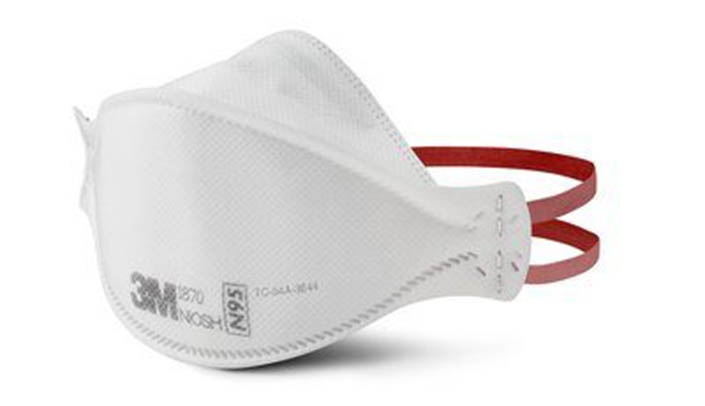
COVID-19 brought supply chain challenges that have never been seen before.
One of the biggest challenges the medical center faced was buying and using N95 masks. According to Tom Strudl, director of procurement and contracting, the price of N95 masks went from $0.65 for one N95 mask in a typical year to $8 during the pandemic.
In a typical year, the med center uses 35,500 N95 masks. During the pandemic, without the method of reusing N95 masks by decontaminating them, the med center would have been using the masks at a rate of 1.3 million/year.
Increased use of N95 masks caused a need for innovation to keep essential employees safe and healthy. The med center stretched the use of N95 masks by decontaminating them with ultraviolet light in order to reuse them.
According to an American Medical Association article, “In 2014, UV light was used to disinfect rooms when the center was treating Ebola patients. Now, UV lights are being used to preserve PPE. This experimental procedure is used to decontaminate N95 masks with ultraviolet light to allow them to be used for a week or longer.”
During the height of the pandemic, the med center was cleaning and reprocessing around 1,500 masks/day. In an Omaha World-Herald article, Julie Anderson quotes John Lowe, PhD, the assistant vice chancellor for interprofessional health security training and education: “Just as ultraviolet light can damage human cells, it also disrupts the genetic material of the novel coronavirus and inactivates it.”
This approach helped keep essential employees safe and healthy and kept N95 masks out of the landfill.
This process may not be transferrable to the next pandemic, which may involve a pathogen that does not respond to UV light. However, it does provide a lesson in how we might approach other waste problems at the med center as we try to achieve our goal of zero waste. How can we reuse what we have in a way that keeps patients and health care workers safe? How can we reduce waste long term?
Check out the dashboard here to find out more about the Med Center’s sustainability goals.
It’s time to garden

With spring weather coming, it’s time to start thinking about gardening.
Community gardens are a great resource if you don’t have a garden available to you or you want to be a part of a gardening community. Gardening is not a “plant and leave” activity — ongoing care and attention is required to grow what you want and to do so in a healthy, safe way. Plus, gardening has been shown to improve both physical and mental health. Exposure to plants, green space and sunlight, alongside fairly rigorous physical activities like digging and raking, all improve health outcomes. Gardens have been used for various therapeutic purposes in different populations with positive results.
It’s estimated that 40% of food in the U.S. is never eaten, and each U.S. household wastes at least $1,500 in food each year — which doesn’t count the waste of the resources used to produce that food or get it to your home. By planting a garden at your home or in a community garden, you can save time, money and help the environment. Gardens are a great tool to bring the family together and get your hands in the dirt to experience nature.
Below are some opportunities to help you up your garden game. Use these resources and start planning your garden for the upcoming spring and summer.
- Cornell University has a great resource on the proper place to grow various vegetables or flowers, plant traits, and special considerations when deciding what to plant and when to plant it.
- City Sprouts and The Big Garden are partnering to offer some great workshops this spring. These workshops range from small space gardening to composting to preparing a new garden site. Check out this link to register for the webinars.
- The Big Garden, City Sprouts, Big Muddy Urban Farm and the Omaha Public Library are offering the seventh annual seed share on March 20. This free community event will take place in the Omaha Economic Development Corporation parking lot, 2221 N. 24th St., from noon-4 pm. Seeds, including many organic and heirloom, will be available free of charge to everyone in attendance. Gardeners also are invited to bring their seeds to share with neighbors. This event is for everyone who cares about strengthening our local food systems from the ground up.
The future of offices
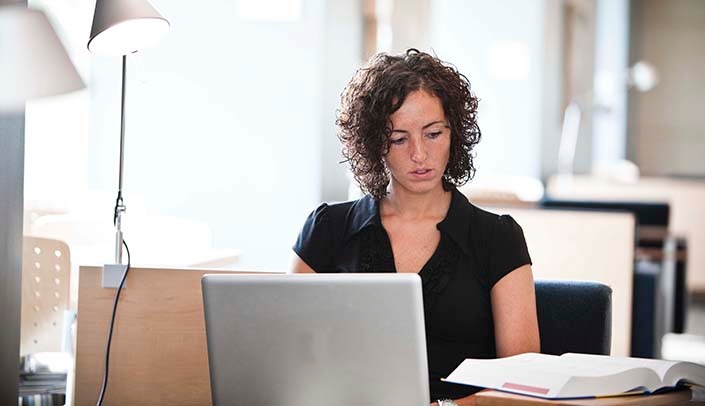
As COVID-19 continues to keep employees working at home, there is a looming change as to how people use office spaces.
We can begin to see a future where people are spending two or three days working from home and only commuting to an office the other half of the week. This ultimately will result in fewer emissions because of the significant reduction in commuting trips.
However, this is not a one-size-fits-all solution for the future of work. Some people may have stressors at home, and some may prefer to be around people and colleagues and not have to consistently get on Zoom. As this New York Times article explains, “Offices will need spaces for specific tasks like focused work, team brainstorming, client presentations and employee training. And they will need to be more focused on individuals, even if these people work for a large company.”
Experts predict that workers will have flexibility in the use of office space and that working will become more dynamic than ever. Some large employers may start to locate additional offices in the suburbs near downtown headquarters. It is likely that the headquarters will continue to be the most important hub, but employees won’t be expected to be there all day every day. As offices begin to decentralize and employees are expected to be at the office less, employees can live closer to satellite offices and be able to walk or bike. This will overall create a better work-life balance for employees.
That’s not the only benefit. According to the EPA, emissions from the transportation sector makes up just over a quarter of the United States’ annual emissions. With shorter commutes, active commuting (like biking, walking or using public transit) becomes a much easier and more convenient option for getting to work.
Increased active commuting means emissions from the transportation sector will begin to decrease. Active commuting also has been shown to improve health outcomes, not only because of reduced air pollution but because of the mental and physical health benefits associated with biking, walking and even taking public transit.
These changes in the way we work will allow cities to change up the way they provide transportation services. With citizens living closer to their office, reaping the health benefits of active commuting, and/or not commuting to the office as often, our communities will become healthier and more sustainable.
Power outages, renewable energy, community health
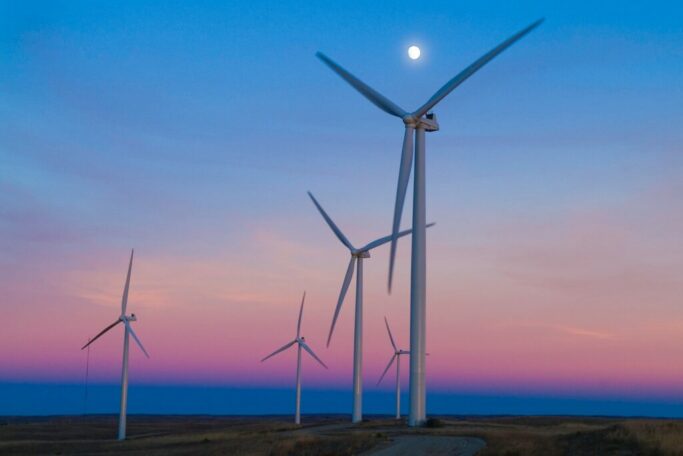
The week of Feb. 15, winter storms and extreme temperatures put a strain on energy infrastructure across the country. Texas and other southern states saw rare low temperatures, ice, and snow, and resulting blackouts left millions of people without power, causing negative health implications throughout the state.
Nebraska also saw power outages, to a much lesser degree. Residents and businesses across the Southwest Power Pool (SPP) were asked to conserve energy as much as possible. Omaha Public Power District and the other members of the SPP (which covers much of the central United States) used 30- to 60-minute controlled outages to help prevent larger blackouts.
Large-scale power outages have a variety of cascading effects. Approximately 8.7 million people were under boil water notices in Texas in the wake of the outages. Grocery stores without power and frozen or broken pipes led to food and water shortages. Some residents without power turned to their cars for warmth, causing at least 300 incidents of carbon monoxide poisoning. Freezing temperatures resulted in hypothermia, the likely cause of death for several individuals in Texas.
These extreme weather events, including winter storms and polar vortexes, are likely to occur more frequently as a result of climate change. Unfortunately, misleading claims have been circulating on social media that renewable energy sources (specifically frozen wind turbines) were to blame for power failures. In reality, the most likely culprit for the failures was a lack of maintenance, weatherization and/or resilience upgrades — and extreme weather conditions caused by climate change. According to the Electric Reliability Council of Texas, “failures in natural gas, coal and nuclear energy systems were responsible for nearly twice as many outages as frozen wind turbines and solar panels.”
Renewable energy is not a source of the problem, but rather a part of the solution. It is increasingly important to continue to pursue sustainable, resilient clean energy infrastructure in the wake of more frequent extreme weather events. Renewable energy helps mitigate climate change, which will reduce frequency of these events and help avoid catastrophes with severe health impacts on our communities in the future.
Renewable energy reduces air pollution, is safer for our environment to produce and, when maintained for weather extremes, is a resilient energy option. Continuing to advocate for an increased prevalence of renewable energy in our electricity grid is an essential step to keeping our communities healthy.

